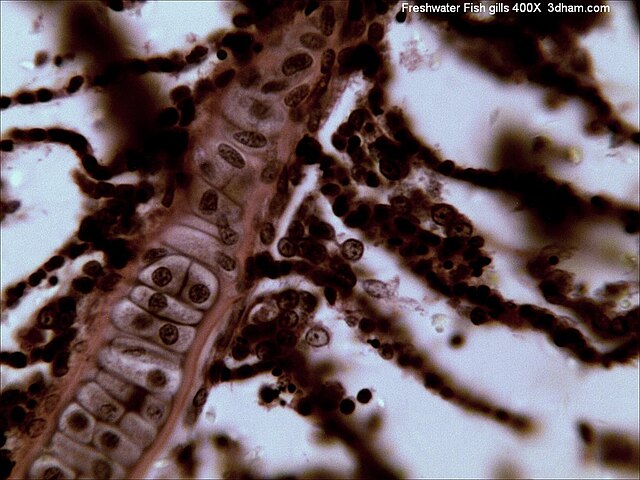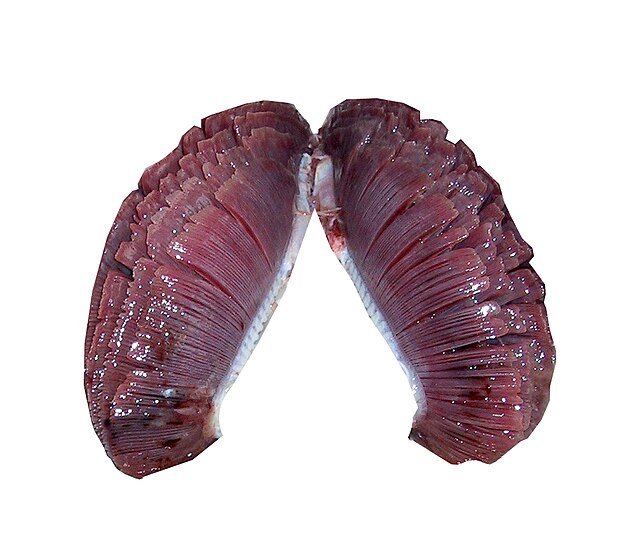A gill is a respiratory organ that many aquatic organisms use to extract dissolved oxygen from water and to excrete carbon dioxide. The gills of some species, such as hermit crabs, have adapted to allow respiration on land provided they are kept moist. The microscopic structure of a gill presents a large surface area to the external environment. Branchia is the zoologists' name for gills.
The red gills of this common carp are visibly exposed as a result of a gill flap birth defect.
Freshwater fish gills magnified 400 times
The red gills inside a detached tuna head (viewed from behind)
An alpine newt larva showing the external gills, which flare just behind the head
The respiratory system is a biological system consisting of specific organs and structures used for gas exchange in animals and plants. The anatomy and physiology that make this happen varies greatly, depending on the size of the organism, the environment in which it lives and its evolutionary history. In land animals, the respiratory surface is internalized as linings of the lungs. Gas exchange in the lungs occurs in millions of small air sacs; in mammals and reptiles, these are called alveoli, and in birds, they are known as atria. These microscopic air sacs have a very rich blood supply, thus bringing the air into close contact with the blood. These air sacs communicate with the external environment via a system of airways, or hollow tubes, of which the largest is the trachea, which branches in the middle of the chest into the two main bronchi. These enter the lungs where they branch into progressively narrower secondary and tertiary bronchi that branch into numerous smaller tubes, the bronchioles. In birds, the bronchioles are termed parabronchi. It is the bronchioles, or parabronchi that generally open into the microscopic alveoli in mammals and atria in birds. Air has to be pumped from the environment into the alveoli or atria by the process of breathing which involves the muscles of respiration.

Fig. 1. Respiratory system
Fig. 2. The lower respiratory tract, or "Respiratory Tree" Trachea Mainstem bronchus Lobar bronchus Segmental bronchus Bronchiole Alveolar duct Alveolus
Fig. 4 The effect of the muscles of inhalation in expanding the rib cage. The particular action illustrated here is called the pump handle movement of the rib cage.
Fig. 7 The muscles of breathing at rest: inhalation on the left, exhalation on the right. Contracting muscles are shown in red; relaxed muscles in blue. Contraction of the diaphragm generally contributes the most to the expansion of the chest cavity (light blue). However, at the same time, the intercostal muscles pull the ribs upwards (their effect is indicated by arrows) also causing the rib cage to expand during inhalation (see diagram on other side of the page). The relaxation of all these muscles during exhalation causes the rib cage and abdomen (light green) to elastically return to their resting positions. Compare with Fig. 6, the MRI video of the chest movements during the breathing cycle.








